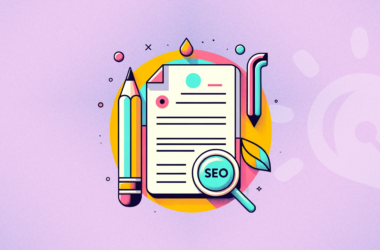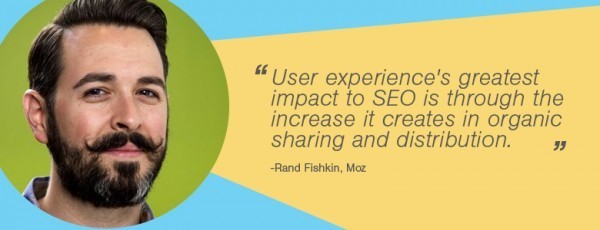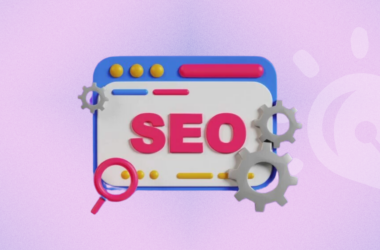Last updated on October 13th, 2023
Content strategists often have to go through the dilemma whether to design the content targeting on the spot in top search engine results or to actually target your audience? Well, the decision is an easy one. If your content is not helpful to the readers, even ranking at the top is not going to be helpful for your product.
On the other hand, search engines are improving to make sure that the most user-friendly and helpful content remains at the top.
Image Source: contentmarketinginstitute.com
Going with the above logic, it’s great to write content that is user-friendly and solves the problems for your readers. Writing, targeting the search engine bots, is not helpful neither in short nor in long run, but creating content for your users is.
But, how to do that?
Well, I say- you tell stories.
Why Storytelling?
The Early Humans chased animals, hunted them down, and sat down to share their stories during the nights around the warm fire with their clan. Stories of bravery, fear, joy, and struggle became the basis for the structure of the clans and trade.
People believe what they see, but the vision of an individual is limited. You have to rely on others’ experiences as well. That’s where stories are crucial.
Roman Kings were the sons of God, Chinese rulers were the interpreters of the almighty, and ancient Indian emperors were representatives of the divine power on the earth. Stories told us, and we believed.
The human mind is not evolved to make sense of numbers and stats, but it understands stories nicely.
What Do You Tell in a SEO Story?
Don’t tell only about what you do. That is what everyone does. Talk about why you are different. Because usual life details are not stories. Something that is different, evokes a human emotion with a conclusion; is a story.
The greatest and the most successful market persons, while introducing their products, don’t talk about the cliché details of their products, or how a particular technology improves a particular way of doing something. Rather they connect with you on an emotional level.
These individuals take you on the journey of highs and lows of your life and make you believe that you are not a mere part of a sales pitch for a product. Instead, they believe in taking a certain page from your life, convert it into a dream; and present them in the form of a product.
Tell the truth, but make it fascinating.
– David Ogilvy
Their conversations are about desires, hopes, liberty and a feeling to go beyond the regular limited world where personal shackles and social boundaries are not broken.
Who is the Protagonist?
This is the most important question- who is the protagonist of the tale? Many would assume, since it is our product, either the product or us, are the probable protagonists. However, this is a wrong assumption and there can be a no bigger mistake than that.
When you are talking only about yourself, what you essentially do is just convert your buyers in numbers and certain categories. And from there starts the series of baseless assumptions.
You assume that a particular trait of your product would be helpful to a group of people and you pitch it to them without even realizing their real concerns. At that point, the buyer is already fed up with hundreds of attempts of buying their attention without even realizing the real problem.
People don’t like to be sold, but they love to buy.
-Jeffrey Gitomer
Understand your buyers, try and feel the problems that they have to face on a daily basis and address the problems. Add value to their lives.
While writing about your product and your values, always put the buyer in the middle of your narration because they are the heroes of your story.
What are the Elements of Your Story?
As Aristotle said, any story- long or short and irrespective of the genre has three basic elements:-
Start (setup) – Here you create a common ground to connect with the readers. Keep things simple, easy and smooth here, so that the reader is connected with you.
Make the readers curious. Help them look through their own lives and let it reflect in the introduction of your story. Because it takes a lot of effort in soaking the new information for readers, make sure that it is not thrown straight away.
Start with their problems and their lives, and prepare them for the rest of your message.
Middle(content) – This is where, you actually address the problem. Conflict is the most crucial aspect here. If there is no conflict, and your writing is plain, that’s not going to get into the reader’s’ hearts.
Touch different issues of the buyer’s life- the problems and the solutions, different emotions – pity, fear, joy, excitement _and anxiety;_ and different values – sympathy, honor, and ideal.
Create an entire world around the buyer’s persona, center their lives around your content. Help them clearly see through the problems, that they are not able to see by themselves.
That the exact point where you establish a connection with them, and you become an integral part of their lives. If you are not able to do that in this part of your content, you are not going to get a second chance.
End(resolution) – Now is the time to sum up your story, and this is not going to be an easy one as well. This is as tough as the other two parts.
While concluding, you take the reader’s journey from the ocean of different emotions to a better-looking world. You create a dream, where there is a possibility of getting rid of their real-life problems.
Creating a dream is easy, making them realize that it is tangible and attainable is the toughest job but is your responsibility as a storyteller.
How to Tell a Better Story?
Know your company better- The first step towards telling a better brand story is to understand yourself.
People don’t buy what you do, they buy why you do it.
– Simon Sinek
What are your values? What do you stand for? What is it that you do better than all of the others? What is your struggle story? What were your highs and lows? Your short-term failures and achievements, and your vision for the future; know and remember everything.
Your readers are keen on knowing all of it, and it is the time that you realize it too.
Know you buyers – I have laid emphasis on the fact that your buyer is the hero. It is the buyer around who the story revolves. Know the buyer almost as well as you know yourself.
It is when, you understand your buyers completely, you are able to design products for them and talk to them clearly.
In his book A Whole New Mind, Danil H Pink differentiates the time in four ages:-
- Agricultural Age
- Industrial Age
- Information Age
- Conceptual Age
We have entered in the conceptual age now. It is not sufficient to make better products now, neither is putting information among buyers.So improve your writing skills, and follow the best white paper practices, not for bots but for your buyers.
The above post gave you an overview of SEO storytelling. It is the time, that you connect with them on a human and emotional level and present yourself different from others.
Have empathy for your readers and know their pain points. Tell better stories and create symphonies!










